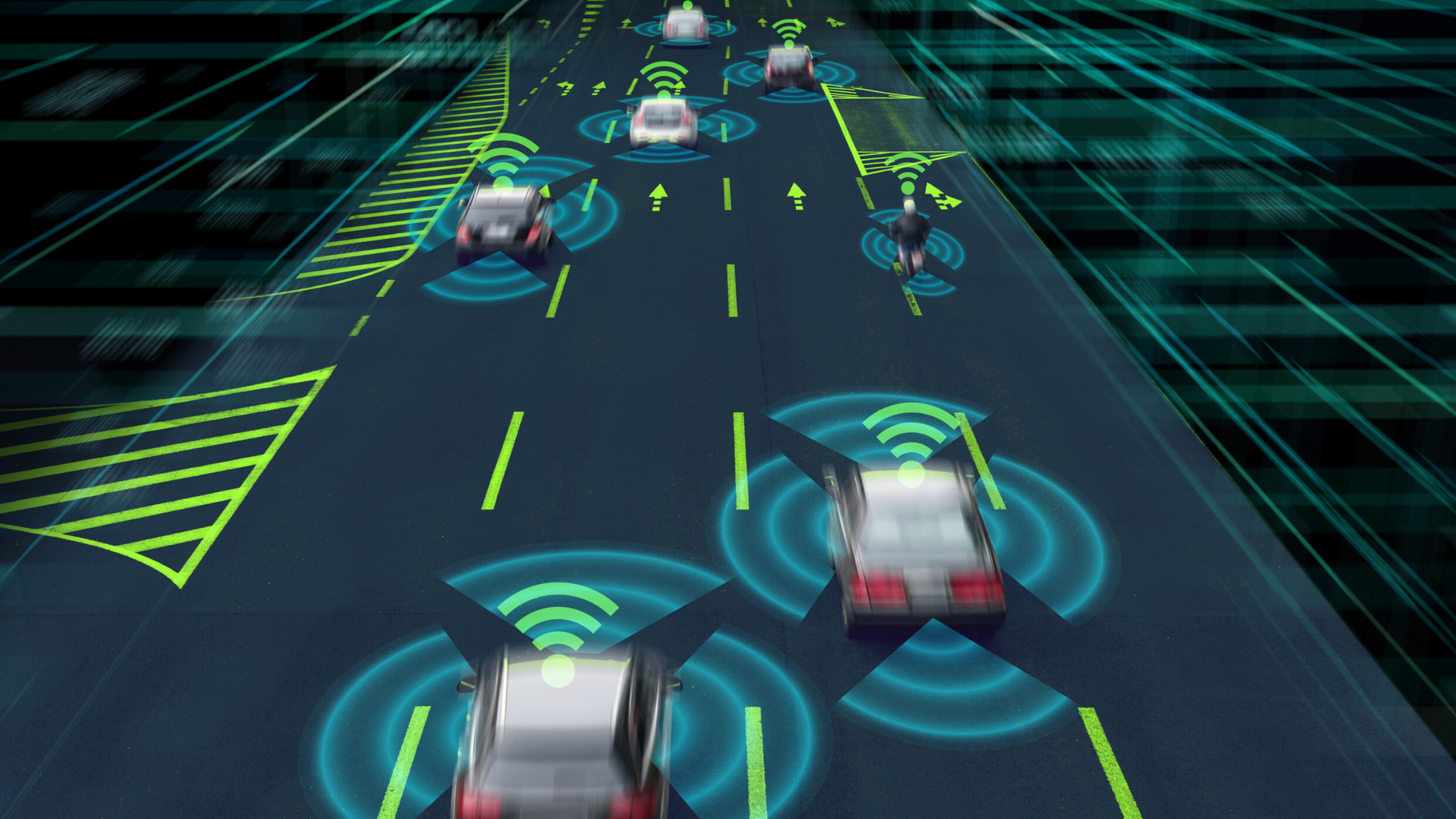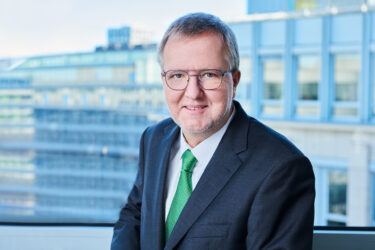Read next
Interview with Reinhard Stolle
"We use AI to make systems safer“
It takes time. And it will take time. But it will come: Fraunhofer IKS is making a decisive research contribution to autonomous driving, explains Dr. Reinhard Stolle, the new head of the Mobility business unit and deputy director of the institute. But there is still a lot to be done.



© iStock/metamorworks
H. T. Hengl:
For years, the major manufacturers have been promising autonomous cars on the roads, but there are still none to be seen. Why is that?
Dr. Reinhard Stolle:
To answer this question, I need to expand a little. There are essentially two different approaches to autonomous driving: the incremental approach and the disruptive approach. Manufacturers that take the incremental approach build on level 2 advanced driver assistance systems (ADAS) and continue to develop the vehicles until they reach levels 3, 4 and eventually 5. The manufacturer uses the data from the customer fleet to improve the systems during development.
The disruptive approach, on the other hand, is based on the insight that autonomous driving is fundamentally different from just an improved ADAS. Here, the focus is on the findings from decades of research into artificial intelligence (AI) and robotics: most successful AI applications operate in "narrow domains", i.e. very narrowly defined areas of application ...
H. T. Hengl:
Can you give an example of this?
Dr. Reinhard Stolle:
The disruptive approach is based on an application scenario that is as manageable as possible, such as a limited area in a city with predictable weather conditions, closely observed typical behavior of road users, etc. In addition, the vehicles are deployed in a mobility service in order to maximize their utilization, so that the necessary expensive technology - computers and sensors - can be amortized.
In contrast, so-called "open-world" AI applications such as the incremental approach, which require general knowledge of the world and common sense, prove to be particularly difficult.

© Fraunhofer IKS
Dr. Reinhard Stolle: "Validation and safety need new approaches in some cases, and simulations will play a particularly important role."
H. T. Hengl:
What does this mean for the feasibility of autonomous driving?
Dr. Reinhard Stolle:
The disruptive approach will conquer the market in a variety of ways over the next few years: as robotaxis or shuttles limited to certain routes in cities, but also in particular for narrowly defined applications in areas without public transport, for example in logistics centers, airports and shipping ports.
The incremental approach also makes sense, but it will focus on level 2 and 3 driver assistance systems for the foreseeable future.
H. T. Hengl:
What exactly are the challenges until the time comes?
Dr. Reinhard Stolle:
I don't see a fundamental problem with the disruptive approach. The topic just needs time for industrialization. The technology is still very expensive, but will be at least partially replaced or supplemented by off-the-shelf technology in the foreseeable future. However, validation and safety need new approaches in some cases, and simulations will play a particularly important role.
It should also be borne in mind that autonomous systems are subject to rapid development cycles. This requires new architectural approaches to continuously use the findings from testing instead of starting from scratch with every software version. The skills required to solve these tasks come - not only, but mainly - from software engineering. The question here is: How do you build and master large, complex software systems? In this respect, I assume that some major software players will continue to be at the forefront of the competition for autonomous driving.
Dr. Reinhard Stolle
Dr. Reinhard Stolle has been heading the Mobility Business Unit at Fraunhofer IKS since the beginning of the year and has been deputy director of the institute since June. He builds on many years of experience in the fields of AI and autonomous driving in industry, including at BMW and Argo AI. Before that, his scientific career took him to the USA, to the University of Colorado at Boulder, and to Stanford University and Xerox PARC in California.
H. T. Hengl:
Where does Fraunhofer IKS's research come in?
Dr. Reinhard Stolle:
Perception, i.e. the automated perception of a car's surroundings, makes extensive use of machine learning (ML) methods. This applies to cars with ADAS as well as autonomous vehicles. Fraunhofer IKS has a great deal of experience in evaluating ML models with regard to properties such as robustness, confidence and other characteristics that are important for safety-relevant systems. And ML will also be increasingly used for trajectory planning in the future. Fraunhofer IKS's experience at the interface between intelligent systems and safety will become even more important.
After all, designing systems to operate safely is of crucial importance, and not just for autonomous driving. Engineers must convince themselves and others that the designed systems are actually safe. For both - design and verification - methods from traditional systems and safety engineering can be used to some extent, but new methods must also be used to do justice to the special properties of AI systems, which is what is happening here at Fraunhofer IKS.
Safety and AI are often seen as opposites by the public. Through our research at Fraunhofer IKS, we can fundamentally change this perspective: We use AI to make systems safer.
H. T. Hengl:
And where do you see the focus of your research work in the coming years?
Dr. Reinhard Stolle:
Essentially, this concerns everything that has to do with AI. And it's about proving the properties of AI systems through research, such as safety, but also robustness and explainability.
In purely academic research, the focus is often on "pure" solutions. For example, a new algorithm is developed and its properties and possible applications are researched. In practice, however, AI methods are usually used as a heterogeneous mixture. I am interested in how we can produce real added value for a wide variety of applications by pragmatically combining several methods.
One of the most exciting areas of research at the moment is the question: can we use the world knowledge and common sense that we believe to observe in large language models (LLMs) and generative AI in such a way that we are no longer restricted to the narrow application domains described above? This is also the topic of this year's workshop, which I organize once a year together with some international colleagues.
H. T. Hengl:
Back to practice. Mercedes Benz and BMW have received approval for level 3 autonomous cars. Has a milestone been reached here and is Germany playing a pioneering role?
Dr. Reinhard Stolle:
Yes, this is certainly a milestone. Mercedes Benz and BMW are traditionally international automotive innovation leaders. Both companies, as well as Volkswagen, have focused on software as a driver of innovation for many years and have developed the corresponding expertise. This benefits the German automotive industry here. Germany is also a pioneer with its legislation and regulation on automated and autonomous driving.

